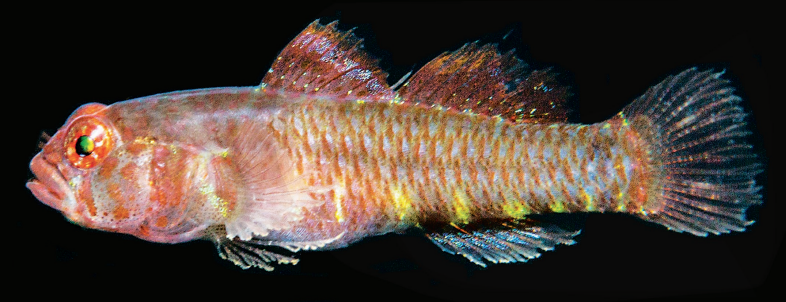A new species of Dwarfgoby has been described from West Papua. The species has been named the Surge Dwarfgoby, Eviota fluctiphila, by Greenfield, Erdmann, and Mambrasar, and joins 128 other species in the genus Eviota, now the second most speciose fish genus found on coral reefs. Its been given the Surge Dwarfgoby moniker as its found in very shallow, high-energy reefs from 0.2-2m deep, and its Latin name “fluctiphila” meaning “wave-loving.” It won’t be easy to spot there however as the female holotype is a minuscule 14.3mm in length, with the male paratypes being a similar diminutive size. The species is also secretive and was never observed fully exposed, making in situ photography nearly impossible according to the paper’s Authors in the Journal of the Ocean Science Foundation.
The new species is currently known only from Batu Hitam in the Kawe Island group of the Raja Ampat Archipelago, West Papua. The specimens were observed sheltering in small cracks in the vertical volcanic rock faces covered to varying degrees with sponges, soft corals, and ahermatypic hard corals. Adult females display red coloration and males, green.

Eviota are found throughout the Indo-Pacific with the greatest diversity in the western Pacific, in the Coral Triangle. In the Hawaiian Islands, larval Eviota constitute the most abundant species in the plankton, and in a survey of fish assemblages across the Great Barrier Reef, three goby species accounted for 55.9% of all specimens, two of them being Eviota species. In spite of their diversity and abundance, Eviota are not often seen because of their very small size, with 43% of the 129 species measuring under 18mm in length. Recent efforts to intensively search for these goby species, in particular, have led to the rapid increase of described species, with 89 species having been described since 1983.



